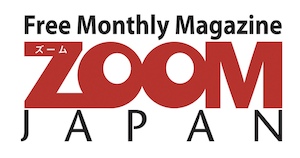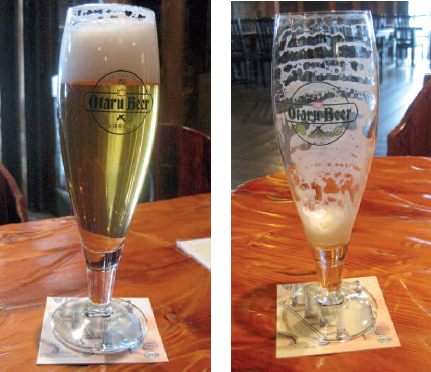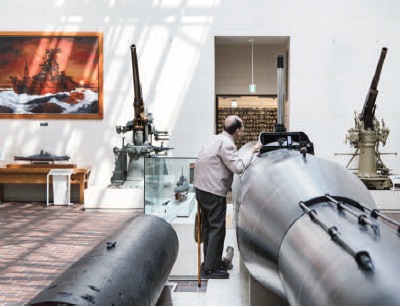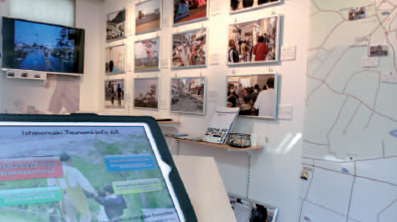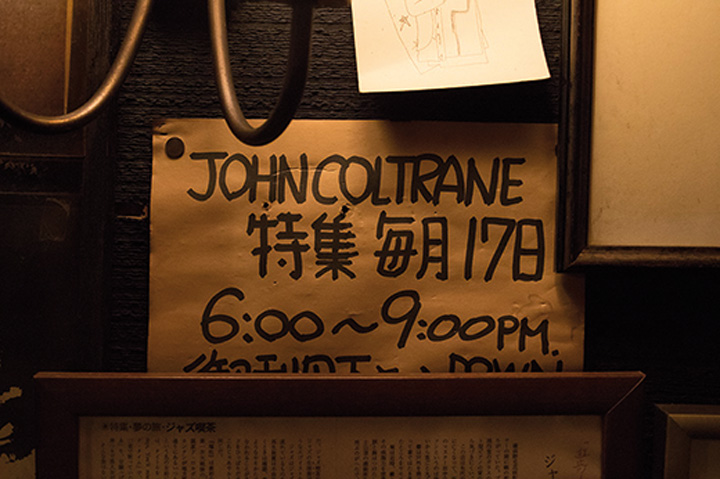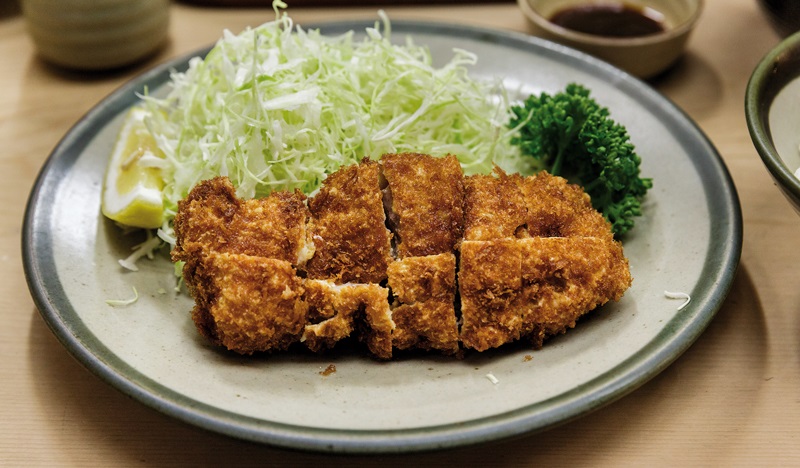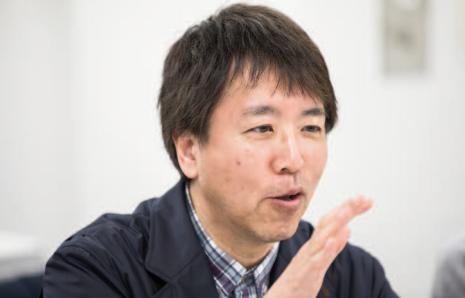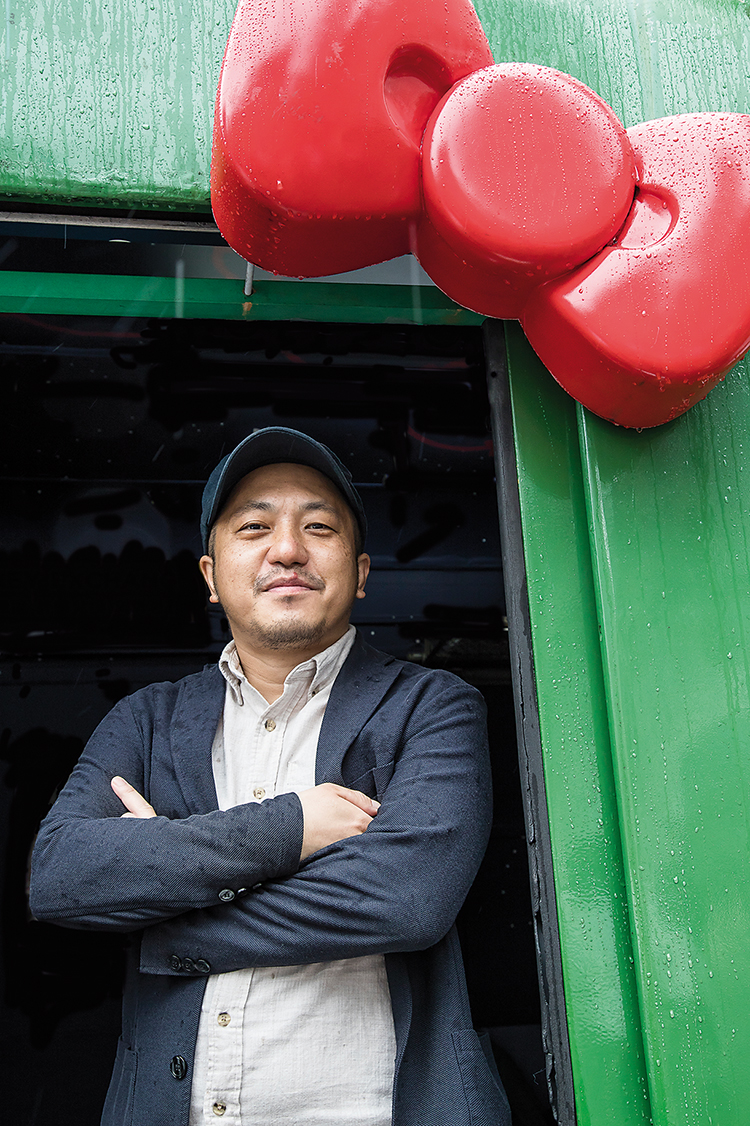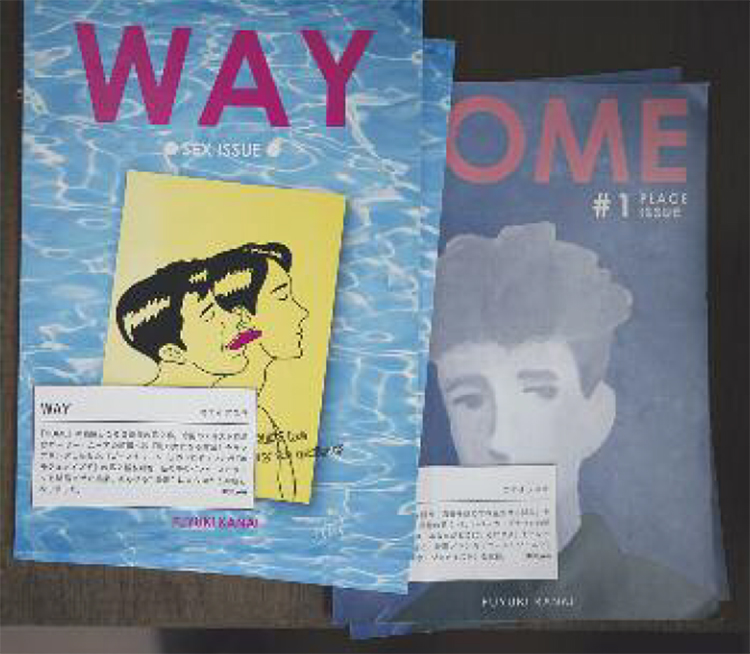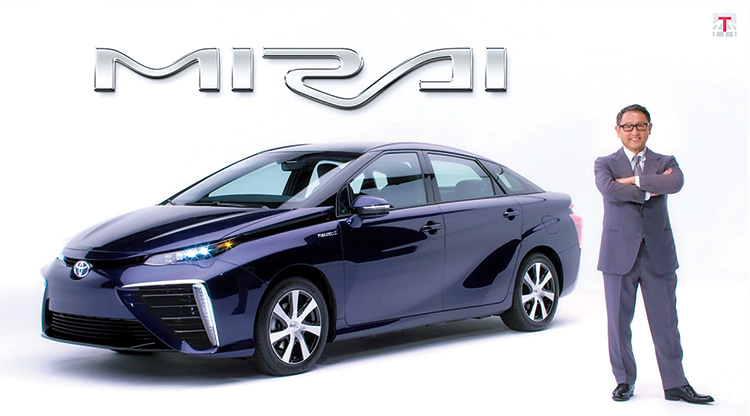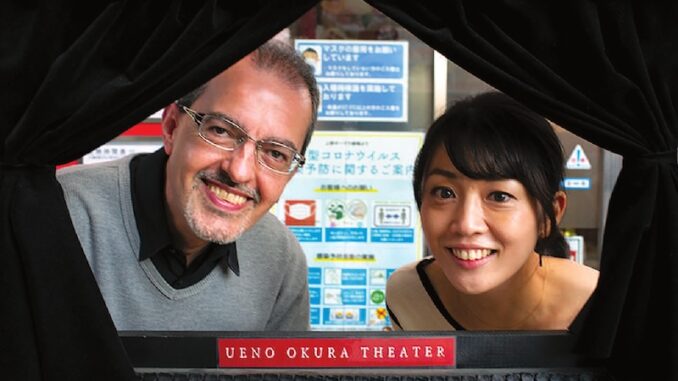
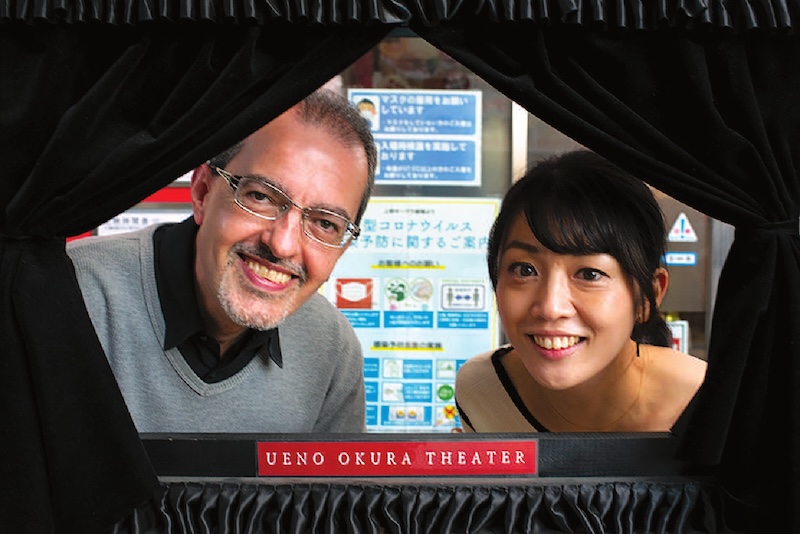
Zoom Japan n°106, December 2020 / Eric Rechsteiner picture for Zoom Japan
On September 8, 2012, I made my way to central Tokyo to meet video journalist Watai Takeharu. Riding the subway, my boss’s brief kept going around in my head: “Discuss the divorce between the Japanese and the media.”
Eighteen months had passed since the triple disaster in Fukushima, and the good, reasonable, long-suffering people of Japan had finally got angry. They wanted to end nuclear power in Japan. However, though protests had steadily grown in size and frequency, most of the national mass media had systematically ignored them. In response to the media blackout, a group of independent journalists to which Watai belonged decided to rent helicopters and show the actual size of the antinuclear demonstrations.
I remember the cramped office where we did the interview, especially the moribund air conditioner that barely worked. I kept sweating like a pig because it was both stifling hot and I didn’t want to disappoint Claude Leblanc, my brand-new editor-in-chief. After all, that was my very first piece for Zoom Japan.
Claude and I met on Facebook, of all places. While checking out another contact’s friends, a colorful Japan-themed icon caught my attention. I clicked on it, sent my friend request, and while exchanging pleasantries with Claude, we realized that I was looking for work and he needed a Japan-based writer. Talk about good timing. That’s what being in the right place at the right time means.
Let’s admit it: most social media are useless time-consuming creatures where everybody shouts and nobody listens. This is also true, and perhaps especially, for Facebook. More than once in the last ten years, I’ve thought about deleting my account. I didn’t do it because, in a sense, my encounter with Claude and Zoom Japan has changed my life.
Now Claude, my boss and good friend, has asked me to write a commemorative piece of sorts. “You could tell our readers what you have learned while writing for the magazine,” he said.
Well, I’ve certainly learned a lot of things in the last 13 years. For example:
・After that first interview with Watai, I began to question Japanese media’s relationship with political power. Thirteen years later, journalism doesn’t fare much better. According to Reporters Without Borders, Japan ranked 70th out of 180 countries in the 2024 World Press Freedom Index. This places Japan at the bottom among the Group of Seven nations. The ranking reflects various challenges faced by journalists in Japan. Since 2012 and the rise to power of the nationalist right, journalists have complained about a climate of distrust, even hostility, toward them. The system of kisha clubs (reporters’ clubs) pushes reporters toward self-censorship and constitutes blatant discrimination against freelancers and foreign reporters.
・When you explore Tokyo, especially on foot, the best thing you can do is forget the usual tourist spots and deep-dive into its hidden corners. Sometimes it almost feel like time travel, like stepping into an older, long-gone Tokyo. You will keep running into small, family-run factories and tiny little shops full of dust and strange objects most people don’t even remember how to use, secluded parks and picturesque roji (alleys) full of potted plants. Then you can rest your feet at a mom-and-pop café. Forget Starbucks, just for once.
・Tokyo is the best booze city in the world, at least, according to Chris Bunting, the author of Drinking Japan, whom I interviewed in 2012. Bunting thinks that Tokyo is a unique drinking place when compared to other cities. “I realize that many people are going to disagree with me,” he said, “but there is little doubt that it does offer exceptional riches to the drinker. The two things that really blew me away were the breadth and the quality of the drinking experiences on offer.” So, if you are a booze lover, you know where to head next time.
・I don’t want to sound like those attention-grabbing sensationalist headlines about Japan, but it seems youngsters are finding it increasingly difficult to make friends. That’s, at least, what I heard from Kudo Kei, the founder of Sodateage.net, an NPO whose mission is to support youth with little social skills and provide them with access to a job in order to achieve social integration and financial independence. “There’s on their part an unwillingness to get involved in new relationships,” he said. “There’s also a reluctance to open up and challenge oneself. You can clearly see the difference with overseas students from Asia, who are always more outspoken, always the first to raise their hands.”
・Running an NGO in Japan is a difficult task compared to other countries. NGOs in Japan don’t have a long history. Most of them have been founded in the 1980s or later, and many people still don’t know what NGOs are or what they do. When I interviewed Amnesty International Japan’s Shoji Hiroka, for instance, I learned that they only had a few thousand members (in comparison, there are 100,000 in Australia and more than 140,000 in the U.K., even though their total populations are much smaller than Japan’s). “The fact is,” Shoji said, “that basic popular understanding of human rights is far behind that of other countries. For this reason, changing the human rights policy of the Japanese government is a real challenge.”
・While in the West it is common for a group of friends – or even unrelated people – to share a place (see the American sitcom Friends or Cedric Klapisch’s 2002 movie L’auberge espagnole), many Japanese have traditionally felt uncomfortable about sharing a living space – and the related chores and responsibilities – with people they didn’t know. They just preferred to live with their families well into their 20s and 30s or move into tiny one- or two-room apartments. Now, however, so-called share houses have become popular. If you ever decide to move to Japan, living in one of those places would be a good chance to make new friends!
・In order to enhance your rail travels around Japan, you should try ekiben (boxed meals sold at train stations). They are still very popular among travel fans (just ask Claude Leblanc), train otaku and foodies. Even now, about 3,000 different varieties are being made around Japan. Travel journalist and food analyst Kobayashi Shinobu told me, “The role of ekiben has changed. They used to be a necessity for travelers, but now they seem to have become more akin to a special souvenir of a particular locality. Kobayashi sure knows her stuff since she has eaten her way through thousands of ekiben while traveling the length of the country for the past 30 years. She sees the future of ekiben as a new class of gourmet food. “Many ekiben are made with ten or more ingredients and prepared and seasoned in so many different ways. Recently, you also see more and more exotic ekiben, like the Koshu Wine Lunch filled with foods that match well with wine, including diced steak or Spanish omelet, and comes with a small plastic wine glass.”
・If you want to visit a sento (public bathhouse) you should hurry because they are fast disappearing. In Tokyo, they are closing down at a rate of one every two weeks, while the national average is one a day. They peaked at 2,600 in 1968, but currently, there are only 462 left (as of 2022), concentrated in the traditional working-class districts. Nationwide, they are down to 2,500 from 18,000 in 1968.
・Japanese food is one of the best in the world, but obtaining good quality ingredients is getting more and more difficult. That’s what I heard from Okuda Toru, a famous chef with six Michelin stars under his belt. “Overfishing during the years of the economic bubble is one of the reasons,” he said. “Also, and perhaps even more importantly, the fishing grounds near Japan have gradually moved northward toward Russia. One reason is global warming, and then, of course, the 2011 tsunami has been disastrous for the fishing industry in Tohoku. If we don’t do something soon, we may reach a point when we cannot make Japanese cuisine anymore.”
・As we are talking about food, another sad news – especially for tourists traveling on a budget – is that when visiting a depachika (the basement food hall of department stores), getting free bite-sized samples has become increasingly difficult. They got clever and now keep them behind the counter. They wait for a customer to show interest in their products. Once they strike up a conversation and see the customer is really interested they take them out.
・According to the Japanese government, the chances of a powerful earthquake striking Tokyo in the next 30 years is as high as 70%. Seismologists’ predictions are even grimmer, but data aside, everybody agrees that it is a matter of “when,” not “if.” When I visited the Tokyo Rinkai Disaster Prevention Park, I was advised to always carry an electric torch and a bottle of water with me. A major quake is immediately followed by a massive blackout. Therefore, a torch can be very useful. As for the water, one of the worst things that can happen besides being injured is finding yourself trapped in an elevator. Consider that in case of a big quake in Tokyo, the elevators in about 30,000 buildings are going to stop automatically for safety reasons. You will likely spend 2-3 days inside one of them, and having some water with you will greatly improve your chances of making it alive.
・Japanese school lunches are often praised for their quality, balance, and educational value. Imagine my surprise when Yasuda Setsuko, who heads the Japan Organic Agriculture Research Center and the Vision 21 information center, told me that in the past, they were completely different. “After the war,” she said, “Japan imported many new ideas from America. One of them was that a bread-based diet was better for our health. At the time, it was advertised widely that eating rice made you stupid (laughs). At the movies, we would see all those big healthy-looking actors, and of course, they all ate bread and meat and drank milk. So, following the American request, for many years the Japanese government provided only bread. Oddly enough, only recently rice has been reintroduced in school lunches.”
・Japanese comics have gone global, and the manga industry is one of the largest in the world. However, it is also famous for its punishing work pace. When I interviewed Italian comic artist Igort, who authored stories for Japanese publishers, he remembered with a mixture of terror and nostalgia the time he spent in Tokyo. “It was 1996,” he said. “I had just arrived from Italy, and between jet lag and the lack of sleep, I was very tired. Instead, my editor arrived at my hotel and immediately put me to work: for two weeks, I had to create a story of 16 tables, drawings and texts every day, to be delivered the next morning. This was his way of seeing if I was able to keep up with their pace. I almost gave up and returned to Italy.”
I could fill many more pages like this, but I will end this sort of walk along memory lane with this thought. In 2012, when I started my collaboration with Zoom Japan, the Tokyo Skytree, the tallest free-standing steel tower in the world, was completed, becoming Tokyo’s newest landmark and pushing the Tokyo Tower to the side. Only one year earlier, the aging tower had felt the effect of the devastating earthquake in Tohoku. The tip of its antenna, badly bent by the tremor, had to be dismantled and repaired.
Well, I still prefer that funky-looking orange and white tower. For almost 70 years, it has been one of Tokyo’s symbols, for better or worse, and it’s here to stay. Its maintenance requires constant care. For example, painting the tower takes about one year to complete and requires a total of 28,000 liters of paint. Since I joined the Zoom Japan team, the Tokyo Tower has been repainted three times, most recently last year, and it looks like new.
Keeping Zoom Japan going also requires a lot of effort and dedication, and in these 15 years, we have taken our share of knocks, but we are still here and have many more stories to tell. I hope you are as excited as we are about what will come next.
Gianni Simone
Follow us !
